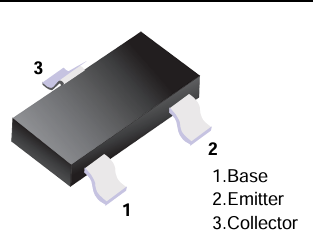Date:2025-06-10 Categories:Product knowledge Hits:331 From:Guangdong Youfeng Microelectronics Co., Ltd
NPN Transistors: VBE must be ~0.7V (silicon) to forward-bias the base-emitter junction, while VCE should exceed the saturation voltage (typically <0.3V) to avoid distortion.
PNP Transistors: Biasing is reversed; VBE is ~-0.7V, and the collector voltage is lower than the emitter voltage. Small Signal Transistors
hFE (β) Tolerance: Since hFE can vary by 50–300 even for the same part number, use a transistor tester to select matched devices for circuits requiring consistency (e.g., differential amplifiers).
Temperature Coefficients: VBE decreases by ~2.5mV/°C, so design biasing with thermal stability in mind (e.g., emitter resistors or thermistor compensation). Small Signal Transistors
Technique | Advantages | Application Scenarios |
Self-Bias | Simple, fewer components | Disposable circuits, low-precision amplifiers |
Voltage Divider | Stable against hFE variations | Audio amplifiers, precision signal chains |
Set VCEQ (quiescent voltage) to ~VCC/2 = 6V for maximum swing.
Calculate ICQ = (VCC - VCEQ)/RC = 6mA.
RE stabilizes IC: VE = ICQ × RE = 6V, so VB = VE + VBE = 6.7V.
Voltage divider resistors: R1 and R2 form a divider for VB, with R2 ≈ (VB × (R1 + R2))/VCC. Choose R1 = 10kΩ, then R2 = 6.7kΩ (use 6.8kΩ standard value).

Previous: Classification, Structure, and Principle of MOSFET